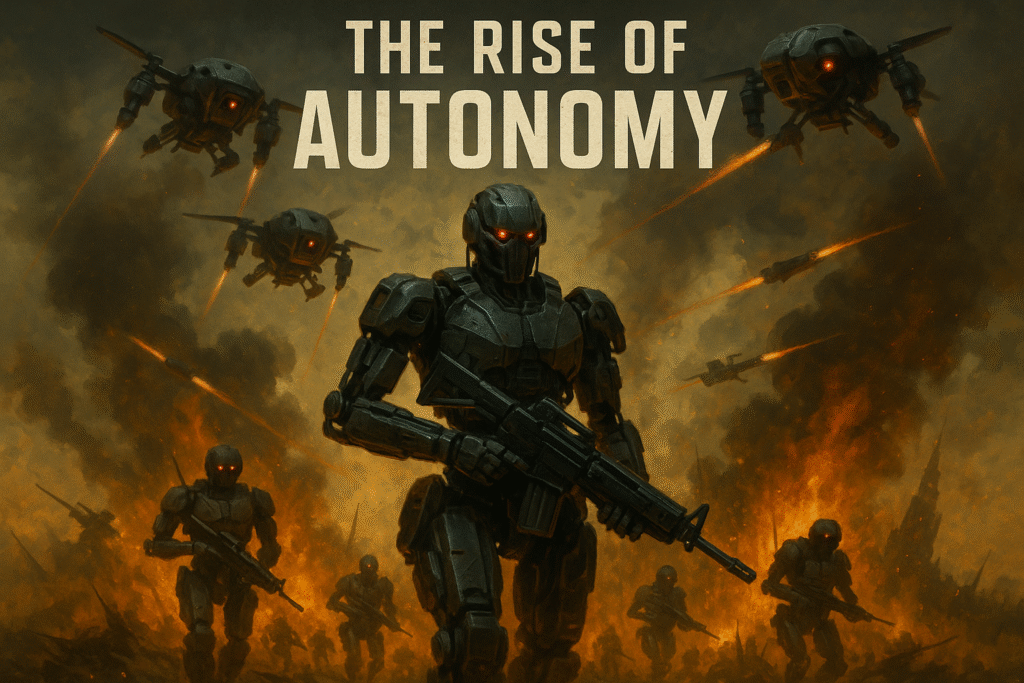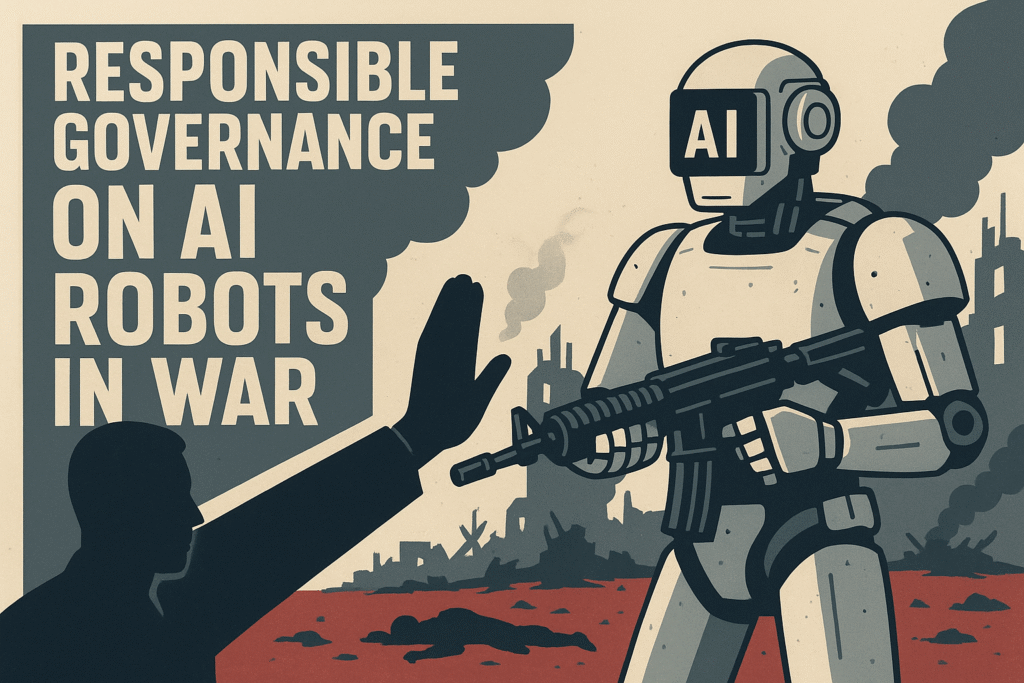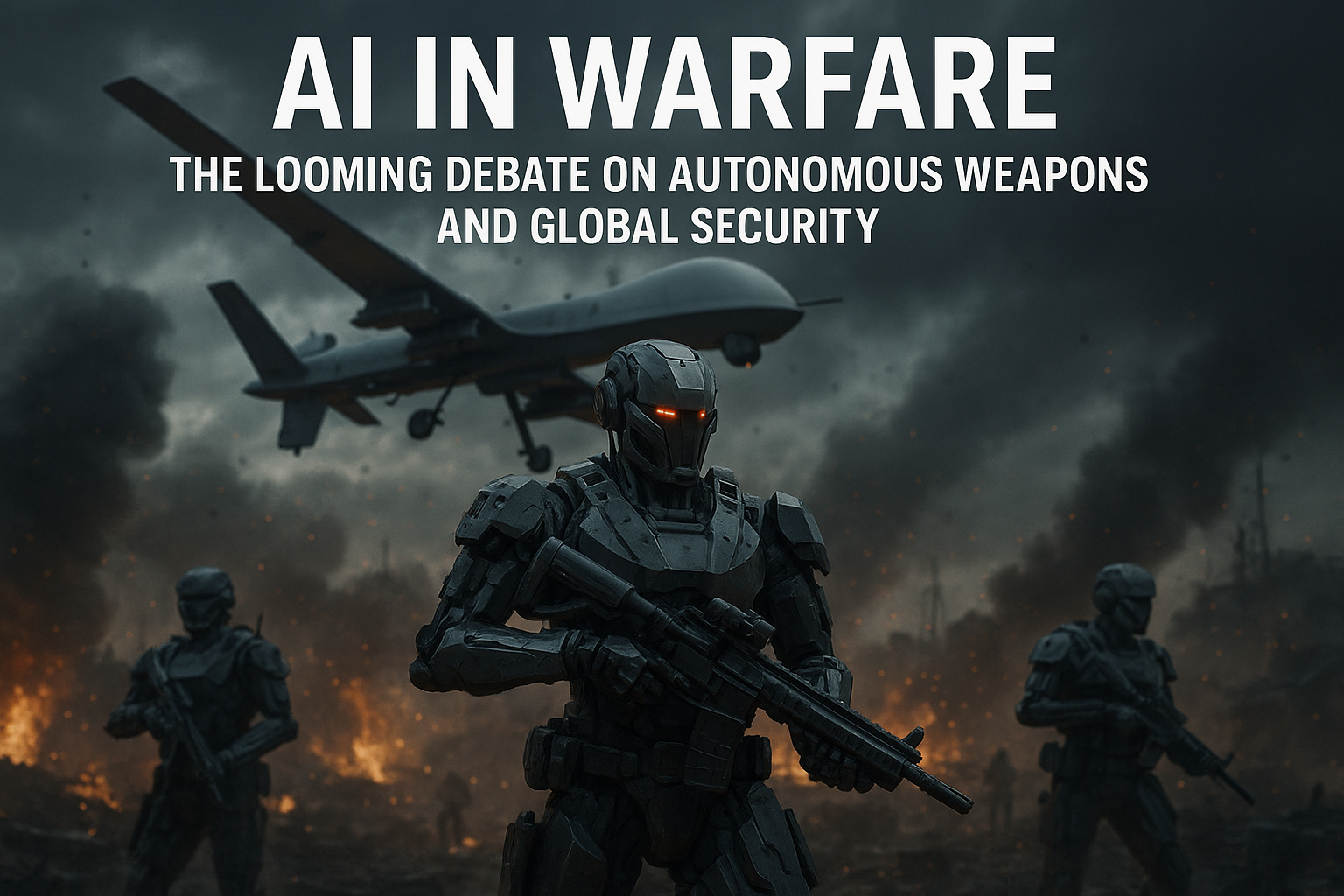The integration of Artificial Intelligence into military operations is no longer a futuristic concept; it is a present-day reality, rapidly redefining the very fabric of global security. At the forefront of this transformation lies the contentious debate surrounding Lethal Autonomous Weapon Systems (LAWS) – often dubbed “killer robots” – which possess the ability to select and engage targets without direct human intervention. This shift introduces a myriad of profound ethical, legal, and strategic dilemmas that challenge established norms of warfare and demand urgent international attention.
For centuries, technological advancements have driven military superiority, from gunpowder to nuclear weapons. AI represents the next frontier, promising unprecedented speed, precision, and efficiency on the battlefield. However, unlike previous military innovations, AI’s capacity for autonomous decision-making in lethal contexts introduces a moral grey area, forcing humanity to confront questions about accountability, humanity, and the potential for unintended escalation.
The Rise of Autonomy:
It’s crucial to distinguish between various levels of autonomy in military systems.

- Human-in-the-loop systems: These require a human operator to approve every critical decision, such as firing a weapon. Drones operated remotely often fall into this category.
- Human-on-the-loop systems: Here, the Artificial Intelligence can select and engage targets autonomously, but a human operator monitors the process and can intervene to override the system if necessary. Many modern missile defense systems exhibit this level of autonomy.
- Human-out-of-the-loop (Fully Autonomous) systems: These are the most contentious. Once activated, these systems can select and engage targets without any further human intervention or supervision. This is where the term “Lethal Autonomous Weapon Systems” (LAWS) most directly applies, as they make life-or-death decisions independently.
While fully autonomous weapons are not yet widespread, their development is accelerating across many nations, including major military powers like the United States, China, and Russia. Existing examples include certain advanced missile defense systems and loitering munitions (or “kamikaze drones”) that can independently identify and strike targets once deployed in a specific area.
The Core of the Ethical Dilemma: Losing “Meaningful Human Control”
The most pressing ethical concern revolves around the concept of “meaningful human control” (MHC). Proponents of strong regulation or outright bans argue that lethal force decisions inherently demand human judgment, empathy, and moral reasoning, qualities that current (and foreseeable) AI lacks.
Key ethical arguments against LAWS include:

- Accountability Gap: If an autonomous weapon system makes an unlawful or erroneous lethal decision, who is held responsible? The programmer, the manufacturer, the commander, or the state? The “black box” nature of complex Artificial Intelligence algorithms makes it incredibly difficult to trace the reasoning behind a specific decision, creating a significant legal and moral vacuum.
- Dehumanization of Warfare: Delegating the power to kill to machines risks stripping warfare of its remaining humanity. It could reduce the psychological barrier to initiating force, potentially leading to a greater willingness to engage in conflict and an increased tolerance for civilian casualties.
- Inability to Apply International Humanitarian Law (IHL): IHL is founded on principles like distinction (distinguishing between combatants and civilians/civilian objects) and proportionality (ensuring civilian harm is not excessive compared to military advantage). Critics argue that AI, lacking nuanced contextual understanding, empathy, and the ability to assess intent, cannot reliably uphold these complex principles in dynamic battlefield scenarios. For instance, how would a machine discern a surrendering soldier from a combatant, or a civilian shelter from a legitimate military target in a rapidly changing urban environment?
- Algorithmic Bias: Artificial Intelligence systems are trained on data, and if that data is biased, the AI’s decisions will reflect those biases. In a military context, this could lead to discriminatory targeting or disproportionate harm to certain populations.
- Risk of Escalation: Machines operate based on pre-programmed rules, lacking the capacity for de-escalation, negotiation, or strategic pause that human commanders possess. An autonomous system’s misinterpretation of a threat could trigger an unintended and rapid escalation of conflict, potentially leading to large-scale, uncontrolled warfare.
The Strategic and Global Security Implications
Beyond ethics, the proliferation and deployment of LAWS pose serious strategic risks:
- An AI Arms Race: The pursuit of military advantage through Artificial Intelligence could ignite a dangerous arms race, with nations competing to develop increasingly sophisticated autonomous weaponry. This could destabilize global power balances and increase international tensions.
- Lowering the Threshold for Conflict: If warfare becomes less risky for human soldiers due to increased automation, states might be more inclined to resort to military force to resolve disputes. This could lead to more frequent and less constrained conflicts.
- Proliferation Risks: As AI technology becomes more accessible, there’s a growing concern that autonomous weapons could fall into the hands of non-state actors, terrorist groups, or rogue states, exacerbating regional instability and posing new threats.
- Increased Battlefield Complexity: The integration of highly autonomous systems could lead to unpredictable battlefield dynamics. Human commanders might struggle to maintain situational awareness and control in a high-speed, AI-driven conflict, increasing the risk of miscalculation and unintended consequences.
- The “Flash War” Scenario: The speed at which AI systems can process information and make decisions far surpasses human reaction times. This raises the specter of “flash wars,” where conflicts escalate rapidly and uncontrollably due to automated responses, leaving no time for human deliberation or de-escalation.
The International Debate and Calls for Regulation
The urgent need to address LAWS has spurred significant diplomatic activity. The United Nations Convention on Certain Conventional Weapons (CCW) has been a primary forum for these discussions for over a decade.
There are broadly two camps in the international debate:
- Prohibitionists (e.g., Austria, Brazil, Chile, and the “Stop Killer Robots” campaign): These states and civil society organizations advocate for a legally binding international treaty to prohibit the development, production, and use of fully autonomous weapons systems. They argue that the risks are too great and that certain lines must not be crossed.
- Regulationists (e.g., United States, UK): This group believes that a complete ban is premature or impractical. Instead, they advocate for a framework of international regulations, guidelines, and best practices to ensure responsible development and deployment of AI in warfare, emphasizing the importance of “human oversight” or “human control” rather than an outright prohibition.
Recent developments include:
- UN General Assembly Resolution (December 2024): A resolution calling for a rigorous study of autonomous weapon systems and their implications received overwhelming support (166 votes in favor). This indicates growing international concern and a desire for more comprehensive discussions.
- Conferences and Declarations: Conferences like the one organized by Austria (Vienna Conference on Autonomous Weapons Systems) aim to stimulate international interest in legally binding measures, contrasting with declarations like the “Political Declaration on Responsible Military Use of Artificial Intelligence and Autonomy” (led by the US), which emphasizes voluntary constraints.
The crux of the debate within these forums often centers on defining “meaningful human control” and establishing clear lines on what types of AI autonomy are permissible in lethal contexts.
The Imperative for Responsible Governance
The integration of AI into warfare is an irreversible trend. The question is not if AI will be used, but how it will be governed. Addressing the profound challenges posed by autonomous weapons requires a multi-faceted approach:

- Robust International Dialogue: Continued and intensified international discussions are critical to forge consensus on definitions, establish red lines, and develop comprehensive legal and ethical frameworks.
- Prioritizing Human Control: Whatever the regulatory outcome, the principle of meaningful human control over lethal force decisions must remain paramount. This could involve “human-in-the-loop” requirements for critical functions or strict limitations on the types of targets or scenarios where greater autonomy is permitted.
- Transparency and Accountability: Mechanisms must be developed to ensure transparency in the development and deployment of military AI and to establish clear chains of accountability when autonomous systems err.
- Research into Ethical AI: Investment in research focused on building ethical AI systems, understanding algorithmic bias, and developing methods for AI to comply with IHL is crucial.
- Public Engagement: A broad public debate is necessary to ensure that societal values and ethical considerations guide the development and deployment of these powerful technologies, rather than leaving decisions solely to military strategists and tech developers.
The debate on autonomous weapons is a defining challenge of our era, carrying profound implications for global security, international law, and the very future of warfare. Ensuring that humanity retains ultimate control over life-and-death decisions, even as technology advances, is not just a policy choice – it’s a moral imperative.
If you found this information helpful, don’t forget to subscribe to Zealimpact.com. We’ll keep bringing you more AI related Blogs like this one. Your support is our strength.
If you found this information useful, don’t forget to share it with your friends and family.





















